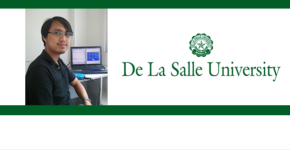 Could being creative come with a side dish of psychopathy?
Could being creative come with a side dish of psychopathy?
Today on The Academic Minute: Adrianne John Galang, assistant professor of psychology at De La Salle University, explains why highly creative artists may have a bit of dark side, too.
I have taught at the leading university in the Philippines (the University of the Philippines) and at De La Salle University (DLSU), the most productive private research university. I have taught undergraduate and graduate courses in personality and social psychology, experimental psychology, and have helped develop the curriculum for the teaching of psychological measurement in DLSU.
My current program of research is on the psychophysiology of affect and decision-making and how these relate to individual differences in higher order cognitive processes. I am working towards extending my exploration into how such affect and cognition interactions develop into tendencies towards risk-taking, analogical and abductive thinking, and creativity. I hope to be able to make an impact in the field of personality psychology and the neuroscience of creativity by substantiating the “prosocial psychopath” model I proposed in Neuroscience and Biobehavioral Reviews in 2010.
Of Creativity and Psychopaths
More than fifty years of research have repeatedly found that highly creative artists and scientists could be reliably described as hostile, arrogant, and dishonest, although they have lots of positive traits too.
In 2010 I proposed a so-called “prosocial-psychopath” model of creativity, where I claim that the puzzling pattern of traits might be explained if creative personalities, and a tendency towards psychopathy had a common neurodevelopmental origin. Although pop-culture psychopaths are represented as serial killers, more benign “sub-clinical” psychopaths have features of psychopathy without being criminal or violent. If my model is correct, we would observe that creative people perform similarly to sub-clinical psychopaths on certain kinds of measures.
We looked at questionnaire-based traits in two samples, one group composed of about 500 young adults, and another group of 250 undergraduates. In the first group, we measured the Dark Triad traits of narcissism, Machiavellianism, and psychopathy and found that narcissism and psychopathy correlated positively with a checklist of various creative achievements. In the second sample we looked specifically at sub-clinical psychopathy and found that psychopathic boldness alone correlated positively with self-reported creative achievement.
In a laboratory-based study, 93 undergraduates were asked to play a gambling task, and simultaneously their autonomic nervous system reactions were measured as skin conductance. It turned out that the people who displayed diminished reactions, and were possibly calmer during the gambling task, also tended to be the people who score better on a test that measured the ability to generate original ideas.
All in all, we think that diminished emotional inhibition is characteristic of a substantial number of creative people, which is a characteristic shared by sub-clinical psychopaths.

